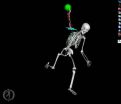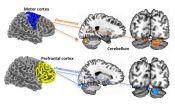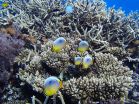(Press-News.org) EVANSTON, Ill. --- A new approach to analyzing baseball-pitching biomechanics may one day give players more personalized feedback and help prevent elbow injuries.
In a computer simulation study of baseball pitching, Northwestern University biomedical engineers found that the strength of the elbow muscles of a baseball pitcher likely play a bigger role in injury risk and prevention than previously thought.
The motion analysis approach currently used in the baseball industry to provide athletes with injury-risk feedback is not sophisticated enough to estimate what an individual player's muscles are doing during a pitching motion or how his muscles are contributing to injury risk.
"Muscles matter in baseball," said James Buffi, first author of the study. "We showed that a pitcher could be at a really high risk or a really low risk of elbow injury, depending on how strong and capable his muscles are."
Buffi is a recent Ph.D. graduate in biomedical engineering at Northwestern's McCormick School of Engineering and Applied Science.
He conducted the research with senior author Wendy M. Murray, associate professor of biomedical engineering at McCormick. Murray also has joint appointments in the departments of physical medicine and rehabilitation and physical therapy and human movement sciences at Northwestern University Feinberg School of Medicine.
"Pitching is an extreme and difficult motion," said Murray, who also is a research scientist at the Rehabilitation Institute of Chicago. "Pitchers are literally throwing so hard that the motion itself acts to tear the elbow joint apart. But why doesn't it? The answer is the strength of the muscles and the ligaments. That's what keeps the bones together."
Results of the study are detailed online in the journal Annals of Biomedical Engineering.
Many baseball pitchers experience an elbow injury at some point in their career. The most common is failure of the ulnar collateral ligament (UCL), which requires ligament reconstruction known as Tommy John surgery.
To better understand the stress pitching puts on the UCL, the Northwestern researchers used a specific computer model developed from bone, muscle and ligament geometry measurements taken in cadavers, as well as muscle volume and strength measurements taken in living subjects. This is the same model developed and used by the researchers to study arm and hand control for advanced prosthetic devices.
They developed a computer simulation of a real high school pitcher's throwing motion to investigate how individual muscles can affect UCL loading and how changes in muscle output can either relieve or exacerbate the load on the UCL.
"Our simulations illustrate that if the muscles were doing nothing, then the bones that make up the elbow joint could have been pulled apart during that single pitch. In contrast, we also were able to implement reasonable assumptions about muscle performance that showed how the very same pitch could result in no load on the UCL at all," Murray said.
While this study only looked at one pitcher and one motion, the simulation approach allowed the researchers to repeat the engineering analysis of the mechanics of that pitch while making different assumptions about what complicated muscles and ligaments are doing and how they are working during a pitch.
The researchers evaluated how effectively the muscles countered the dangerous load at the elbow joint during a pitch and used a variety of assumptions to understand how sensitive the simulation results were to muscle strength and other model parameters.
With more research, this approach could enable targeted training of specific muscles and more accurate assessments of UCL vulnerability, Buffi said. He is planning to use this research and further this work in a career in the baseball industry.
"Elbow injuries are a huge problem in baseball, from little to major leagues, and our study shows that muscles play a part," Buffi said. "If you're not accounting for muscles, even if you know the total elbow load on a pitcher, he could be at a really high risk or a really low risk of injury depending on how strong and capable his muscles are."
INFORMATION:
WELLESLEY, Mass. - A new study by Heather Mattila, a leading honey bee ecologist and Assistant Professor of Biological Sciences at Wellesley College, published on April 8 in PLOS ONE, reveals that inadequate access to pollen during larval development has lifelong consequences for honey bees, leading not only to smaller workers and shorter lifespans, but also to impaired performance and productivity later in life. For the first time, this study demonstrates a crucial link between poor nutrition at a young age, and foraging and waggle dancing, the two most important activities ...
In early childhood, the neurons inside children's developing brains form connections between various regions of brain "real estate." As described in a paper published last week in the journal Biological Psychiatry, cognitive neuroscientists at San Diego State University found that in children and adolescents with autism spectrum disorder, the connections between the cerebral cortex and the cerebellum appear to be overdeveloped in sensorimotor regions of the brain. This overdevelopment appears to muscle in on brain "real estate" that in typically developing children is more ...
A single infusion of an experimental anti-HIV antibody called 3BNC117 resulted in significantly decreased HIV levels that persisted for as long as 28 days in HIV-infected individuals, according to Phase 1 clinical trial findings published online today in Nature. Major funding for the research was provided by the Bill and Melinda Gates Foundation, The Rockefeller University, and supported in part by the National Institute of Allergy and Infectious Diseases (NIAID), a component of the NIH. The research was led by long-time NIAID grantee Michel C. Nussenzweig, M.D., Ph.D., ...
The four collaborating organizations are the American College of Nurse-Midwives; the American College of Obstetricians and Gynecologists; the Association of Women's Health, Obstetric and Neonatal Nurses; and the Society for Maternal-Fetal Medicine. Additionally, these organizations partnered with VitalSmarts, a research and training organization.
The report, "Transforming Communication and Safety Culture in Intrapartum Care: A Multi-organization Blueprint," follows previous research on safety concerns during childbirth and communication among labor and delivery teams. ...
Washington, DC--Pesticide exposure, not obesity alone, can contribute to increased cardiovascular disease risk and inflammation in premenopausal women, according to a new study published in the Endocrine Society's Journal of Clinical Endocrinology & Metabolism.
The study looked at the effects of exposure to polychlorinated pesticides such as DDT. Although DDT was banned in many countries in the 1970s, it remains widespread in the environment and food supply.
DDT was one of the first recognized endocrine-disrupting chemicals, according to the introductory guide to endocrine-disrupting ...
A collaboration led by Shigeyuki Yokoyama of RIKEN and Takashi Kadowaki and Toshimasa Yamauchi of the University of Tokyo has used the SPring-8 synchrotron facility in Harima, Japan to elucidate the structure of two receptors of adiponectin, a protein that is associated with obesity and diabetes. The researchers hope that in the future this work, which was published in Nature today, will pave the way toward designing drugs that target these two receptors, AdipoR1 and AdipoR2, to reduce the early mortality associated with diabetes.
Adiponectin, a hormone secreted by fat ...
In the first results to emerge from HIV patient trials of a new generation of so-called broadly neutralizing antibodies, Rockefeller University researchers have found the experimental therapy can dramatically reduce the amount of virus present in a patient's blood. The work, reported this week in Nature, brings fresh optimism to the field of HIV immunotherapy and suggests new strategies for fighting or even preventing HIV infection.
In a person infected with HIV, there is an ongoing arms race between the virus and the body's immune system. Even as the body produces new ...
In a feat that would have been unachievable only a few years ago, researchers at UC San Francisco have pulled aside the curtain on a protein informally known as the "wasabi receptor," revealing at near-atomic resolution structures that could be targeted with anti-inflammatory pain drugs.
Officially named TRPA1 (pronounced "trip A1"), the newly visualized protein resides in the cellular membrane of sensory nerve cells. It detects certain chemical agents originating outside our bodies--pungent irritants found in substances ranging from wasabi to tear gas--but is also triggered ...
A new scientific synthesis suggests a gradual, prolonged release of greenhouse gases from permafrost soils in Arctic and sub-Arctic regions, which may afford society more time to adapt to environmental changes, say scientists in an April 9 paper published in Nature.
"Twenty years ago there was very little research about the possible rate of permafrost carbon release," said co-author A. David McGuire, U.S. Geological Survey senior scientist and climate modeling expert with the Institute of Arctic Biology at the University of Alaska Fairbanks. "In 2011, we assembled an ...
Fish are the key ingredients in a new recipe to diagnose and restore degraded coral reef ecosystems, according to scientists from the Australian Institute of Marine Science, WCS, James Cook University, and other organizations in a new study in the journal Nature.
For overfished coral reef systems, restoring fish populations that perform key roles will in turn restore ecological functions critical to recovery. For moderately or lightly fished reefs, the recipe requires knowing which fish to catch, how many, and which to leave behind.
The authors assessed fish biomass ...



